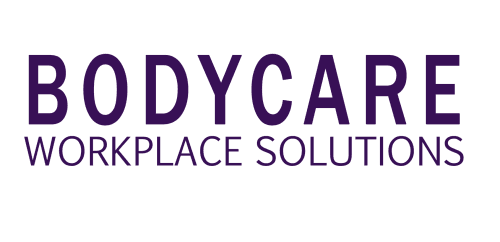Protect your feet at work

If you’re one of the millions of Australians who work on their feet each day, it’s highly likely that you will have experienced swelling, blisters, aching, shin splints, leg pain and perhaps even more serious injuries that can accompany long periods of standing.
For employers, ensuring that your team aren’t unnecessarily suffering from work related foot problems is essential in improving productivity, reducing absenteeism and avoiding potential WorkCover claims.
The good news is that there are ways we can all protect our feet in the workplace.
Who is most at risk of foot problems at work?
Whilst anyone who spends prolonged time on their feet risks potential injury, there are some workplaces and industries that are more prone to foot related complications, some of these include:
● Construction sites
● Warehouse and distribution centers
● Manufacturing production lines
● Hospitality venues such as industrial kitchens and restaurants
● Laboratories
● Retail
● Hospitals
● Manual workshops
While standing is a key contributor to foot related problems, it’s not just the standing that makes these industries more hazardous. Take the construction industry for example, not only are workers required to be on their feet all day, they also have the added challenges of working on uneven or extremely hard surfaces which can lead to significantly more wear and tear on the feet, ankles and lower legs. Another contributing factor is the type of standing, within the industries outlined, static standing plays a major roles in their daily routine of these workers.
Performing a workplace Risk Assessment can help to determine if your workplace is a high risk environment for foot injuries, allowing you to implement strategies that reduce the likeliness of a problem occurring.
What potential workplace foot problems are there?
The types of foot issues an employee could experience at work range from minor complications to serious injuries that may even require hospitalisation.
Potential problems from prolonged workplace standing include:
● Damaged joints
● Aching and swollen feet
● Heel spurs
● Inflammation of the veins
● Plantafaciitis
● Rheumatic disease caused by degenerative damage to the tendons and ligaments
● Reduced fetal growth in the pregnant
For roles that require employees to partake in manual handling , the risk of injuring the feet through dropped items, mechanical malfunctions and trips, slips and falls are even more prominent. These injuries could include:
● Broken bones
● Torn ligaments
● Skin burns or incisions
● Tearing of the achilles heel
If an employee is seriously injured, they may be unable to work for substantial periods of time. Ensuring that your workplace has a comprehensive return to work program in place will help to support and manage employees back into the workplace after a serious injury.
Why are foot problems such an issue for employers?
In 2013-14 there were 3,957 serious claims brought against employers for injuries related to the feet and toes. As an employer, it is your legal responsibility to ensure that the workplace is safe and without risks to health. This means that the design of all workstations, internal policies and appropriate rest breaks must be monitored/up to date to provide optimal protection for the feet. Bodycare can help you implement the correct procedures and ergonomic equipment to minimise the risk of foot problems in your workforce.
How to reduce the risk of foot problems
There are a number of strategic precautions employees and employers can initiate to reduce the risk of foot problems in the workplace.
Workplace risk assessment
Poor work practices, site layouts and inadequate workstations can play a significant role in the development of many preventable musculoskeletal disorders and foot injuries. Having a professional Onsite Injury Prevention Specialist identify the risk factors in your workplace and recommend strategies to reduce these risks through worksite layout, equipment utilisation, ergonomics, procedural changes and education should be the first step you undertake in protecting feet in your workplace.
Wear correct footwear
With 60 to 70 per cent of us encountering foot problems at some point in our lives, wearing the right shoes for the job should always be a priority. Appropriate footwear provides adequate protection from injury and comfortably supports the feet.
Some occupations have specific footwear requirements such as protective steel-capped boots for construction workers or chemical resistant shoes for laboratory workers. However, as a general guideline, work shoes should be:
● Well-fastened and enclosed
● Sturdy, with a wide heel and firm back to support the ankle
● Cushioned for comfort
● Sporting a sensible sole that is non-slip and oil resistant
● Well fitted to the shape of your feet
● Kept clean and stored in a cool, dry place away from sunlight
Take breaks
Giving employees a chance to sit down and take pressure off their feet can help alleviate the pain and swelling associated with prolonged periods of standing. This doesn’t just refer to designated lunch breaks. Where possible, tasks that can be completed whilst seated should be incorporated into an employee’s duties to help encourage job variation throughout their work day or job rotation should be encouraged.
Educate your team
Many employees are not aware of the small changes they can make to help protect their feet from injury at work.
Bodycare can help to educate you and your workplace in identifying hazards, manual handling techniques and injury management to minimise the incidences of feet injuries at work. The Bodycare team, also have the skills and experience to perform short ‘feet assessments’ on individuals so that one on one advice can be provided and recommendations around appropriate footwear can be shared.
Protecting your feet at work should be a priority for every business. Not only will you reduce the prevalence of preventable workplace injuries, but you’ll protect your business from lost productivity and potential WorkCover claims. Speak to Bodycare today to get started.


